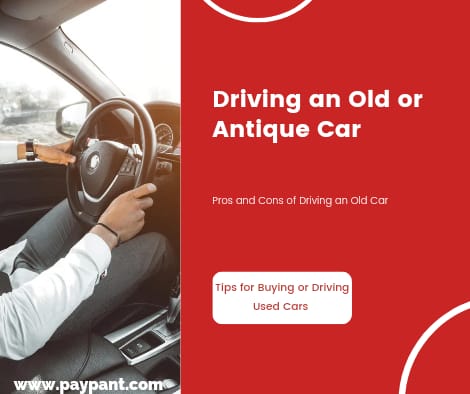Last updated Mar. 12, 2023 by Peter Jakes
The used auto market is a beautiful place to start if you want to cut costs when purchasing a vehicle. This is especially true for other large one-time purchases like car purchases.
However, the process may appear intimidating if you’ve never purchased a used vehicle. To be sure, there are benefits and drawbacks to driving an old car. In this article, “Driving An Old or Antique Car: Pros and Cons,” Let us look at a couple of them.
Old is not the same as antique or classic, but they can be all the same. As a car enthusiast, you must have a favorite vehicle. It has to be a part of your garage one day, no matter how old it is. That is when a car is considered a classic. However, owning a classic car is not the same as admiring one. You could either find a wrecked car and rebuild it or find a completely restored model and drive it out into the sunset.
In either case, we recommend weighing the benefits and drawbacks of buying a classic before deciding.
How Old is an Antique Car?
People have different ideas about how old a car needs to be called a “classic,” but in general, an antique vehicle was made after 1930 and more than 25 years ago.
How old is Vintage cars?
“Vintage” cars are those made before 1930. If you want to know how to drive a vintage car, you should know that they are even more challenging to drive than an old classic car.
How old is Veteran Cars?
On the other hand, a “veteran” car is even older. It was one of the first cars made in the late 1800s.
Related: To Buy or Lease a Car: Which Is Cheaper?
Driving An Old or Antique Car: Pros and Cons
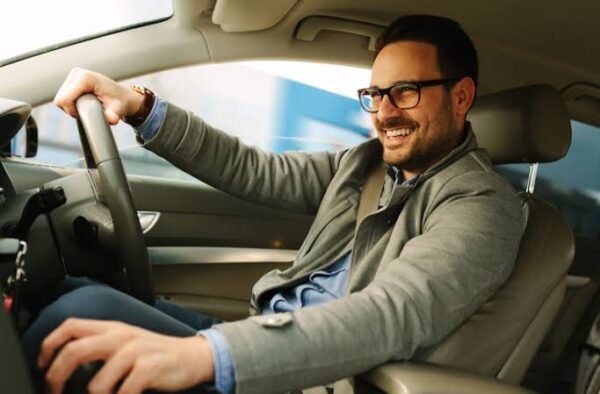
Pros of Driving an Old or Used Car
1. Old Cars are Cheaper to Get
Let’s start with the most obvious thing: a used car will cost less than a new one that is the same. People often say that a new car will lose several thousand pounds in value as soon as it is driven off the lot. Used vehicles don’t have this happen to them.
2. You need a Low Loan Amount for an old car
The most obvious benefit of buying a used car is getting it for less money. This means that you will have to get a loan for a smaller amount, and you will also have to pay less interest on it. Well, you could say this advantage is related to the first one, but if you keep reading, we’ll show you how this can also be a drawback.
3. Reduced Insurance Costs
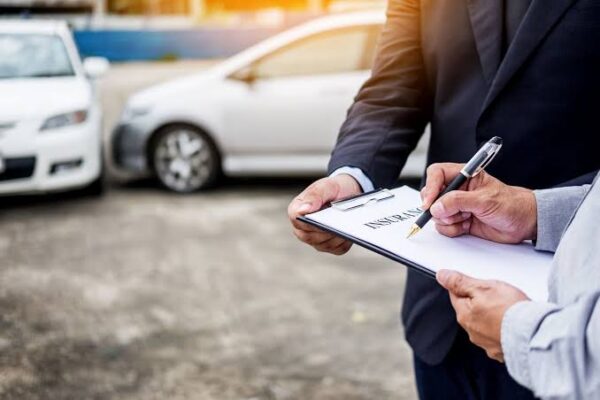
Since the value of your car has gone down, so has the cost of your insurance. The insurance company will have to pay less if you get into an accident or something breaks down, and they will pass this savings on to you. Compare prices to find the best one and find the best option to save money.
Another thing you must have is car insurance. Whether you buy a new or used car, you are supposed to get it insured. But the insurance on a new car is more expensive than on an old one.
If you look for a good car on the used car market, the previous owner had already paid the high premiums when the car was new. Now that the car’s IDV (Insured Declared Value) is lower than it used to be, you can quickly pay the lower premiums.
Related: Whole Life vs. Universal Life Insurance: Best Insurance for investing?
You Have a Warranty on Repair for Old Cars
When you buy a used or old car from a brand-authorized dealer, the repairs are covered by a warranty. In my case, I bought a Maruti Suzuki car from an AutoNation store. The car was still covered by the factory warranty when I bought it. So I got dual benefits. MSIL’s warranty covered my car for the first three years. After that, I will get Auto Nation’s extra warranty. Both sides are happy!
Pros of buying a Classic or Antique Car

1. Antique Cars Have Better Style
Most of the parts in modern cars are the same, which is one reason why they look, feel, and drive pretty much the same. On the other hand, an antique car is in a completely different league. It looks better as time goes on and will always be more eye-catching than the average modern car. In addition, antique cars have personalities, which will definitely rub off on the owner. So when you drive a classic car, you should be ready to look much more remarkable.
2. Antique Cars Come With More Attention
When you pull up in an old car, everyone goes “tap tap tap tap.” People you don’t know are coming up to you and talking to you. Everyone wants a picture with you. You feel like the hottest new star in town. Well, that’s for the old car. If you drive an antique car, you’ll be the talk of the city wherever you go. You can also expect them to drool. Phone numbers will be passed to you, and your new friends will want to ride in your car.
3. You have More Control of Antique Cars
Classic cars were made when noise, vibration, and harshness (NVH) weren’t as important as they are now. So you can expect to hear the exhaust note inside the car. Classic cars don’t have any comfort features, so you have a bigger role as the driver. On the other hand, you do have control over what the car does. The point of a classic car is the ride, not the place you’re going.
4. Owning a Classic Car Comes With its Emotional Appeal
There are many reasons why you might want to own an old car. For some, it could be the classic look or the fact that it’s old, while for others, it could remind them of their glory days. Some cars make you feel that way. Maybe you spent your childhood in the back seat, or perhaps it was the first car you bought with your money.
There are a lot of reasons. The emotional value of the car to you is more important than how much it costs to buy, how much it costs to keep running, and other things. You can’t put a price on what that makes you feel.
5. Antique Cars Appreciates in Value
Unlike modern cars, which lose value as soon as you drive them out of the dealership. The value of antique cars stays the same over time. On the other hand, some antique cars might also go up in value if they are kept up and cared for. Classic cars are a new investment that will be sure to pay off in ten years. Asian countries with many new millionaires have a much higher demand for American and European classics, which means their value will rise in the coming years.
Cons of Driving an Old or Used Car
1. Driving a Used Car comes with Higher Interest Rates
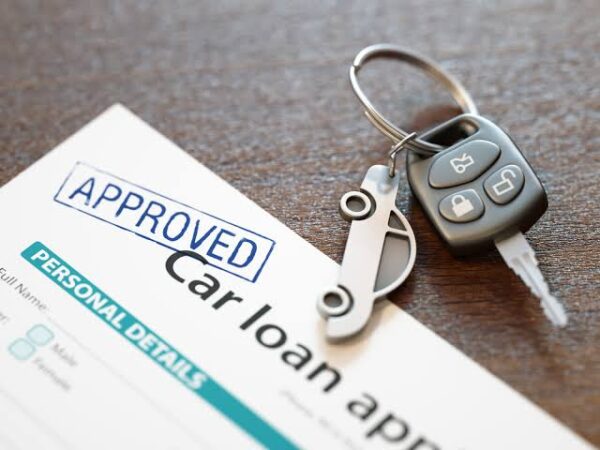
You apply for a loan for a smaller amount when buying an old car because the price of the vehicle is low. But the interest rate on a loan for a used car is usually higher than that of a new car. No matter what, they have to make more money, so here’s the catch. You could save on the amount of the Loan’s principal, but you can’t save on the interest rates.
2. Old cars come with Fewer additions and functions
If you want a car with all the latest bells and whistles, you probably won’t be happy with an old one. On the other hand, you might be able to find an older car with some features that are common today. But most of the time, they will seem pretty simple.
For example, the last car I bought had a manual wiper and bulb. At one time, that was a cool thing to have. But it’s pretty much useless these days. Older cars simply don’t have the same technological features as brand-new ones, but they’re also much cheaper, which is hard to beat.
3. Old Cars Come With Buyer Beware Caveat
When you buy a used car, you can’t always be sure of what you’re getting, especially if you buy it from the person who used to own it. Many problems don’t show up until you’ve driven the car for a few weeks, and if you’re unlucky, you might spend more on repairs than you saved on the price of the car.
Also, if you buy a car directly from the owner, you won’t get the same warranties and protections when buying from a dealership.
4. Old Car Parts Can Be Difficult To Find
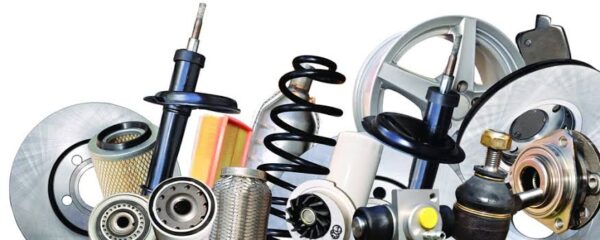
Another Con of driving an old car is that it might be hard to find parts for it. This is very true for cars that are more than 15 years old. Of course, this depends on what kind of car you have and how old it is. But generally, it’s easier to find car parts made within the last 5 to 10 years.
5. You Just May not Need an Old Car If the One You Have is Up and Running
If your car is still running, there’s no reason to get a new one unless you’re a serious car collector. Why spend money on a new car when you’re already happy with the one you have, and it gets you where you need to go?
New cars are constantly hitting the market. Hence, it’s easy to trade in your old cars for ones. But if your car still runs well, you might as well enjoy the benefits of driving an older car while you can.
6. Rust Can Be A Problem With Old Cars
If you live in a humid area (like we do), rust can be a big problem for older vehicles. It’s not uncommon for cars in these areas to develop rust within just a few years. And once rust starts, it’s only going to get worse. So if you’re looking at an older car, just make sure to get a thorough rust inspection. If it’s bad, you might want to move on.
7. It Can Be A Lot Of Work Maintaining Old Cars
Old cars are almost always less advanced than new ones. This means they don’t use as little gas and have more wear and tear, so keeping them on the road usually costs more. In addition, they won’t have crumple zones or other advanced safety features like newer cars do.
Taking care of an old car can be a lot of work. If you don’t know much about cars, keeping up with all the repairs and maintenance that an older car needs can be hard.
Cons of Driving An Old Antique Car
1. The Costs Of Owning Antique Cars can be Much
Owning an antique car has always been a job for people who love and understand their car and are willing to give it all the care and attention it needs, like buying steel garages for sale to keep it safe.
Many people who buy a used classic car have to pay more upfront than someone who buys a used non-classic car. If there are any problems, they may also have to pay more to fix them. Classic car parts can be harder to find than modern car parts, and depending on the type of classic car you own, you may find that only certain garages can fix it for you.
2. Lack of Safety with Antique Classic Cars
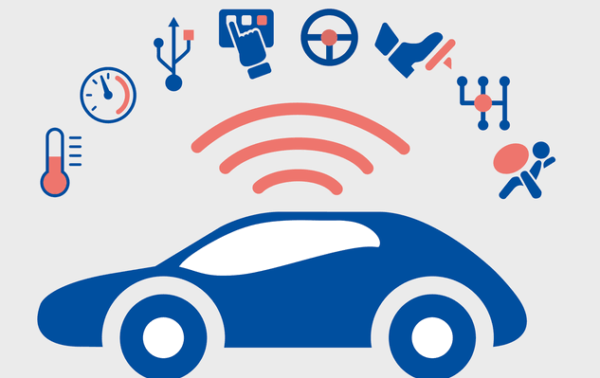
The safety standards of today are not met by old cars. They are from a different time and were not made for the roads and speeds we use now. Many old cars don’t even have seat belts, and they’re not safe to drive because their frames are weak and there are no crumple zones. So if you’re taking your family on a trip, it’s better to use a new car.
3. Classic Cars May Not Be Reliable
Even though rust can happen to any car, it is much more likely to happen to older cars. Old cars get rust because older cars are usually made of more steel than newer ones, and this steel can rust. Along with the rust, classic cars are less likely to work well because they have been used for so long. But if you can find a vehicle that someone else has taken care of well and you do the same, you should be able to avoid many reliability problems.
4. You may Pay more Green Tax with Classic Cars
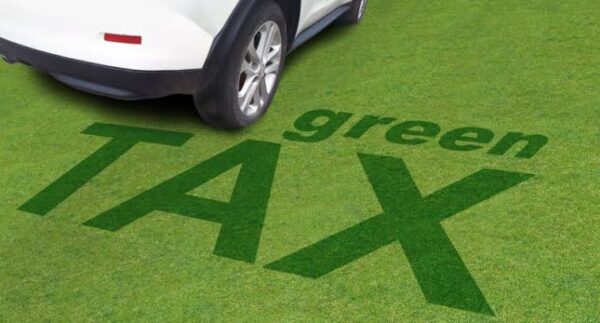
Because of their age and the condition of their engines, classic cars are also the most polluting. You will also have to pay green tax, which will add to the total cost of the classic car. The car is also hard to drive, which is another problem.
Some people might want to use it on the weekend, but others might only take it out of the garage once a year.
Spend some time looking for a good classic before you think about buying one. Many people might try to scam you by doing bad bodywork or giving you the wrong car with panels that have been switched out.
If you want to restore it yourself, you should first find a restoration expert who can help you with all the car’s details. After all, you don’t want a piece or scrap of something in your garage.
When Should you Consider Buying An Old Car?
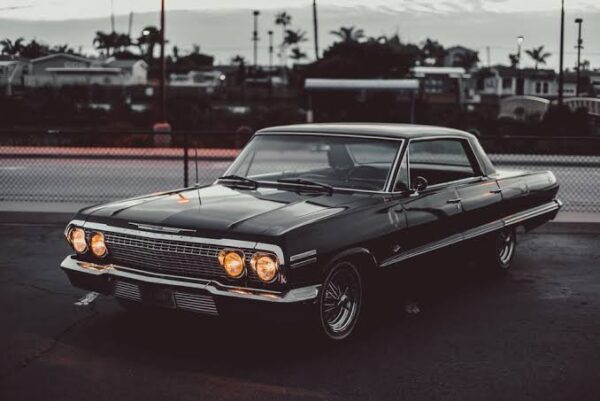
● Buy an Old Car When You Want to Use it to Make an Investment.
Buying used cars is often an excellent way to save money, but if you really want your money to grow over time, you might want to buy antique cars instead.
The value of many of these old cars has increased significantly in recent years and decades. But, if you know how this business works, you can also make a lot of money by buying old cars and selling them a few years later.
● Consider Buying an Old Car When You are in College
Used cars are also a good choice for college students, who often don’t have enough money to buy a new car.
They still have to pay a lot for school and a place to live, and they won’t have much left to buy a new car. So, in this case, it can be great to buy a used car because you can get from point A to point B and still save a lot of money.
● Buy An Old Car When You Are on a Low Income
In general, buying a used car instead of a new one makes more sense if you are poor and don’t have much extra money.
So, if you are in a bad financial situation and need money quickly to pay off your loans, you probably shouldn’t buy a new car. Instead, you should probably buy something used and cheap.
● Buy an Old Used car When You are Retired or Planning Retirement
Used cars are also great for retirees since many don’t have a lot of money and are happy to buy any car they can afford. Also, used cars are great for retirees because they often have fond memories of driving those same models when they were new decades ago.
9 Tips to Know When Getting an Old Car

When you’re ready to buy a used or old car for yourself or someone else, you should do so confidently. If you know how to spot the signs of possible issues and other problems, you can save money on future repairs. Even after you buy your car, there are still things you can do to keep it safe.
1. Do Tons Of Research
Before you buy an old car, make sure to do your research. You could end up with a real lemon if you’re not careful.
Check out websites like Edmunds and Cars.com to learn about different makes and models in a reliable way. Also, don’t hesitate to ask friends or family members if they know anything about a particular car.
During your research, you’ll probably find a few cars that are more reliable than others. Then all you have to do is find the car you want for sale.
2. Decide What’s Most Important.
There are many reasons to buy a car that’s been around for a while. But you should know what’s most important to you before looking at the classifieds or going to a car lot.
Having a clear decision on your preferences will help you make sure you buy a car that fits your needs and wants, not one that is right for someone else.
Ask yourself these questions about the purchase you’re about to make:
- Do you want something in particular? If there’s a specific classic model that speaks to you, you should only look for that one.
- Are you planning to use this car as your primary way to get around? If so, you’ll need an old car that works well even though it’s old.
- Are you looking for a place to put your money? Unfortunately, you’ll have to stick to cars that will get more expensive over time.
Related: 21 Places To Easily Sell Your Used Electronics: Helpful Tips
3. Take the Old Car You Want to Buy For an Extended Test Drive
A test drive is often one of the first things people do when they want to buy a car. But going around the block in the car can only show so much.
Make sure everything is working well by driving at least 10 miles. Also, try taking your test drive on city streets and highways to get the best idea of how the car handles at different speeds.
Look for leaks, strange sounds, and smells that might happen while driving. Some car dealerships may even give you a longer test drive, giving you a day or weekend to get a feel for the car.
However, no matter how long you can test drive a car, you should always look for key warning signs, especially if you are shopping for an older or used car.
4. Budget For Repairs And Maintenance
One of the most important things you can do when owning an older car is to budget and save for repairs and maintenance.
These kinds of expenses are inevitable and, thus, should never surprise you. However, if possible, you should keep a couple of thousand dollars in an automotive sinking fund. This sinking fund will help you cover the cost of any significant repairs that come up without hurting your other financial goals.
5. Find the Right Protection Plan For Your Car

Whether your car is new or used, it’s important to protect it from breakdowns and repairs that aren’t covered by your insurance. Most factory warranties last for three years, five years, or 60,000 miles, so if you bought a used car, the first coverage is likely over.
Some dealerships will give you a warranty on an older car if you buy it from them. But let’s say you’re buying from the seller directly or taking over a car from a family member. With a vehicle service contract, you can still get full coverage in that case.
6. Be Proactive With Maintenance
Another important tip is to take care of your maintenance more proactively. This means changing the oil, replacing the brake pads, and ensuring the tires are in good shape.
If you wait until something breaks before fixing it, it will cost you much more money. Plus, you’ll have to deal with the headache and stress of rushing to get your car working again.
I know it’s not fun to pay for car maintenance, but these proactive costs will save you a lot of money in the long run.
7. Know the Value of the Car
It’s essential to know how much a car is worth before you buy it, whether it’s new or used. This information can be a little harder to find for older cars, but you can find some older models on sites that help determine how much a used car is worth.
Also, since antique car sites only list older cars, it can be helpful to find out how much they are worth.
The National Automobile Dealers Association, or NADA, is also an excellent place to find out how much an old car is worth. Even though the price you see is the dealer’s price, you can use it as a starting point when negotiating for your vehicle.
8. Verify the Car Parts
When buying an old car, watch out for odometer fraud, when the odometer is turned back to make it look like the vehicle has been driven less than it has.
You should avoid odometer fraud regardless of why you want to buy an old car. Here’s how you can find out:
Be especially wary of old cars that haven’t been driven very much. They do exist, but not very often. If the car hasn’t been driven much, check the mileage as much as possible.
Look for stickers and records that say “maintenance” on them. Stickers can be found on many parts of the car that have been fixed.
There may be a reading from the odometer when these stickers change the part. In the same way, the maintenance records from the last owner can give you an idea of the mileage.
9. Consider How the Value Will Change
Most of the time, a car’s value goes down over time. This is called “depreciation,” and it’s just something that happens when you own a car. But some old cars can get more valuable over time.
So before you buy, consider what you think the car will be worth and decide if that is a reasonable expectation.
When buying an old car as an investment, choosing one whose value can go up is important. Old muscle cars or classic trucks that people want may have a lot of potential.
Cars from the 1980s, usually cheap, can also go up in price. But make sure the car is one that other people will want to buy in the future.
If you’re buying a car, don’t expect it to increase in value. Of course, this can happen, but most of the time, driving the car will cause its body and parts to wear out and lose value.
Read also, 16 Places to Get Cheap RV Rentals Near You
Bottom Line
Buying an old or antique car is an excellent idea if you research and consider what’s important to you and how good the car is. Of course, buying an old car has pros and cons, but doing your research well will get you a good deal.
You can find the classic you’ve always wanted or reliable transportation at a price that won’t break the bank. Also, you can choose from a lot of great old cars. So your new old car is waiting for you out there.
Since so many Americans want to buy cars now, planning ahead to save as much money as possible is essential. Used cars are pricey, but you won’t have to deal with the high prices, limited supply, and big drop in value that come with buying a new car.
Don’t miss this 10 Ways to Get Cheap Roadside Assistance
Frequently Asked Questions (FAQs)
Q: Should I drive an old car every day?
To summarize, you may surely drive a historic car daily if you so like. There are many people we know who do this. It’s not as difficult as some people make it out to be, especially if you drive a more recent classic daily.
You don’t have to worry about preserving the appearance of your old car in great condition. Your vehicle has likely seen everything from coffee spills to door dings. Keeping your old automobile around can help relieve some of the burdens of maintaining a new one.
Q: Why is driving an old car better?
You don’t have to worry about preserving the appearance of your old car in great condition. Your vehicle has likely seen everything from coffee spills to door dings. Keeping your old automobile around can help relieve some of the burdens of maintaining a new one.
Q: How do I lessen the inconvenience of driving old cars?
Fortunately, numerous solutions mitigate the inconvenience caused by these issues.
Here are a few examples:
- Set aside money for car repairs and maintenance.
- Locate a dependable mechanic.
- Learn how to perform basic repairs on your own.
Ultimately, it all boils down to how much work you’re willing to put in. Owning an older automobile may be a gratifying experience if you’re not scared of a bit of elbow grease.
Q: Are older cars harder to drive?
As you might think, driving an older car requires a lot more physical effort to start, steer, and brake – since they lack much of the contemporary trickery that makes driving a newer car so simple.

